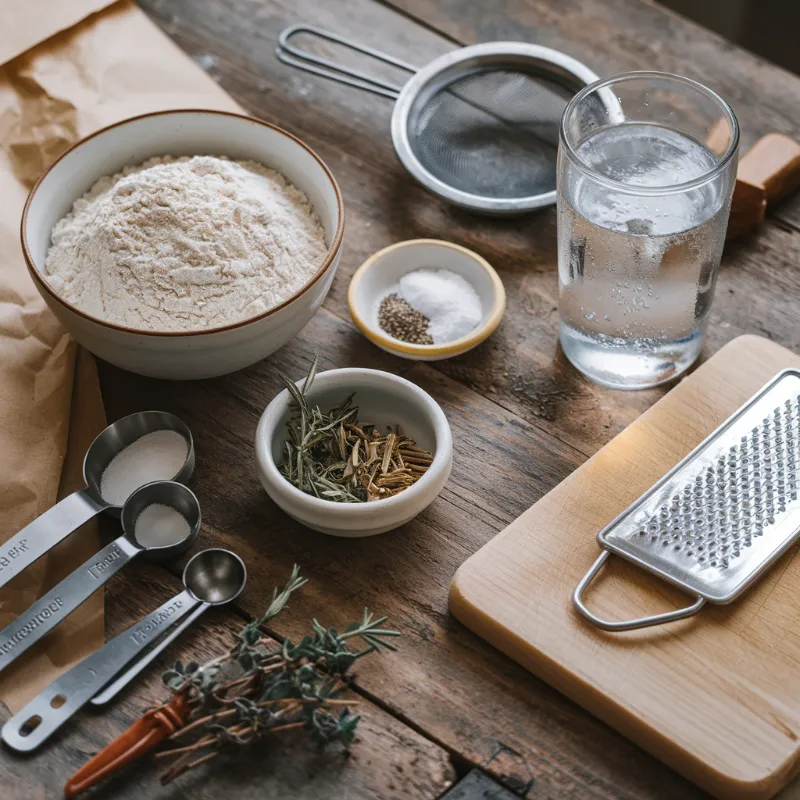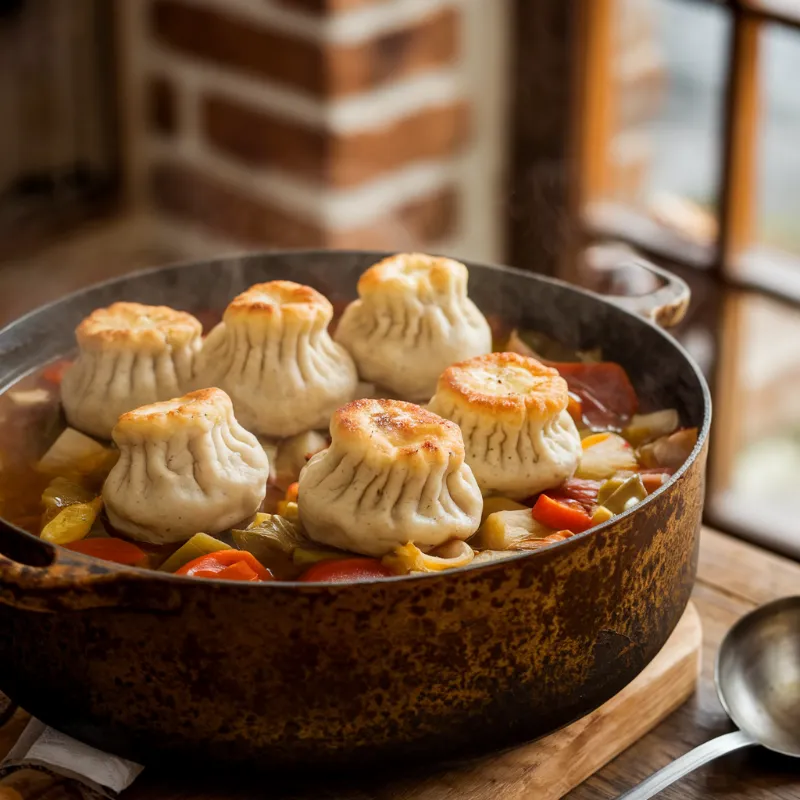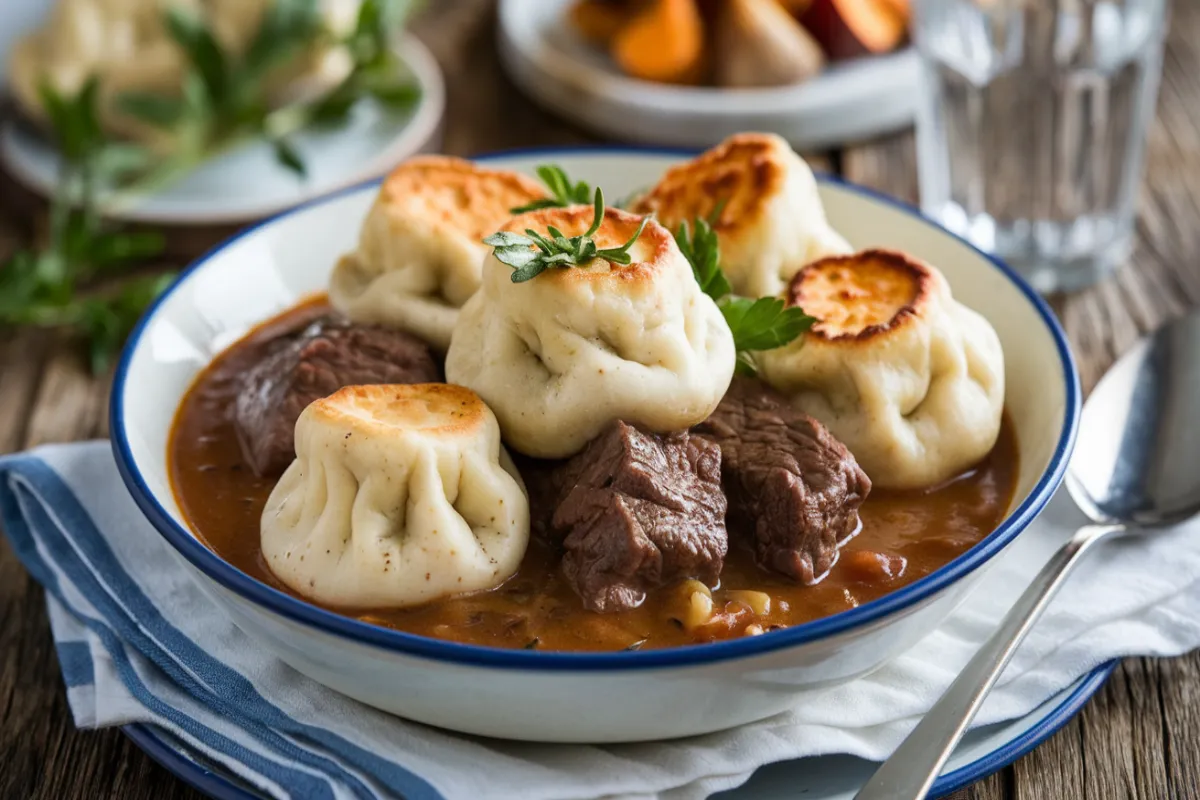There’s something truly comforting about a warm bowl of stew topped with fluffy, tender dumplings. But if you’re living a gluten-free lifestyle, finding a dumpling recipe that delivers on texture and taste can feel like a challenge. Worry not—this gluten free dumplings recipe is here to save the day!
After plenty of testing and tweaking, I’ve crafted a recipe that’s just as satisfying as the traditional version. Whether you’re cooking for yourself, your family, or guests with gluten sensitivities, these dumplings are soft, flavorful, and perfect for a cosy weeknight meal.
Let’s dive into the ultimate guide for making gluten-free dumplings that will have everyone asking for seconds.
Table of Contents
Why You’ll Love These Gluten-Free Dumplings
If you’ve struggled to find a gluten-free dumpling recipe that ticks all the boxes, you’re in for a treat. Here’s why you’ll love this one:
- Soft and Fluffy Texture: Just as comforting as traditional dumplings—no grainy texture here!
- Simple Ingredients: Made with easy-to-find staples, most of which you likely have in your cupboard.
- Versatile Flavour: Easily customizable with herbs, spices, and seasonings to suit your dish.
- Perfect for Stews & Casseroles: These dumplings soak up all the rich flavours of your favourite hearty meals.
- Freezer-Friendly: Make a batch ahead of time and freeze for later convenience.
Whether you’re new to gluten-free cooking or a seasoned pro, this recipe will soon become your go-to for all things cosy and comforting.
Recipe Highlights
Here’s what makes these dumplings stand out:
- 🕒 Quick Prep Time – Ready to cook in under 15 minutes.
- 🌿 Customizable Flavours – Add your favourite herbs and spices for a personal touch.
- 🥘 One-Pot Wonder – Cooked directly in your stew or casserole for easy cleanup.
- ❄️ Freezer-Friendly – Store leftovers or uncooked dough for future meals.
Ingredients You’ll Need
Before you get started, gather these essentials:
- 🥣 200g gluten-free self-raising flour (or plain gluten-free flour with 2 tsp baking powder)
- 🧂 1 tsp salt
- 🌶️ ½ tsp black pepper (optional, for extra seasoning)
- 🧈 100g chilled lard or vegetable shortening (as a suet substitute)
- 💧 8–10 dessert spoons of cold water
- 🌿 1 tsp dried herbs (optional, such as thyme, rosemary, or parsley)

Tools Needed:
- Large mixing bowl
- Coarse grater
- Sieve
- Greaseproof paper
- Measuring spoons
How to Make Gluten-Free Dumplings (Step-by-Step)
1️⃣ Prepare Your Lard or Shortening
Start by chilling your lard or vegetable shortening. Wrap it in greaseproof paper and place it in the freezer for about 30 minutes—this step helps create that soft, fluffy texture.
Once chilled, grate the lard using a coarse grater directly into a mixing bowl. This ensures an even distribution of fat throughout the dough, which is key for soft dumplings.
2️⃣ Mix the Dry Ingredients
In a large bowl, sift together:
- The gluten-free flour
- Salt and pepper (if using)
- Any dried herbs you’re adding for extra flavour
Give everything a gentle stir so the seasoning spreads evenly throughout the mixture.
3️⃣ Combine the Dough
Toss the grated lard into the flour mixture and coat it well. Slowly add cold water (start with 8 dessert spoons) and stir gently until a firm but slightly sticky dough forms.
Pro Tip: Avoid over-mixing to keep the dumplings light and fluffy—overworking the dough can make it dense.
4️⃣ Shape Your Dumplings

Divide the dough into eight equal portions. Lightly roll each into a ball using your hands—no need for perfection here!
5️⃣ Cook the Dumplings
About 25–30 minutes before your stew or casserole is finished cooking:
- Gently place the dumplings on top of your simmering dish.
- Cover with a lid for soft, fluffy dumplings.
- For a crispier texture, leave uncovered during the last 10 minutes of cooking.
The dumplings will puff up beautifully, soaking in the delicious flavours from your stew or casserole.
Pro Tips for Dumpling Success
- Chill the fat – Cold lard or shortening is essential for light, airy dumplings.
- Don’t overmix – A light touch keeps the dough from becoming tough.
- Use a lid – Covering your dish traps steam and ensures soft, fluffy dumplings.
- Add herbs – Fresh or dried herbs like rosemary, thyme, or parsley boost the flavour.
Variations and Substitutions
Want to shake things up? Here are a few tweaks you can try:
- 🌱 Vegetarian-Friendly: Use vegetable shortening instead of lard.
- 🌶️ Spicy Kick: Add a pinch of smoked paprika or cayenne pepper for heat.
- 🧄 Garlic-Infused: Mix in a teaspoon of garlic powder for an aromatic twist.
- 🌿 Herb-Loaded: Use fresh chopped herbs instead of dried for stronger flavours.
Storage and Reheating Tips
To Store:
- Uncooked dough can be wrapped tightly and stored in the fridge for up to 2 days.
- Cooked dumplings last 3–4 days in the fridge when stored in an airtight container.
To Reheat:
- Gently steam or microwave until warm to retain their fluffy texture.
- If reheating in a stew, simmer for about 10 minutes to allow them to reabsorb the flavours.
To Freeze:
- Shape the dough into balls and freeze on a tray. Once solid, transfer to a freezer-safe bag.
- Cook directly from frozen—just add an extra 10 minutes to your cooking time.
Perfect Pairings for Your Dumplings
- Stews & Casseroles: A rich beef or vegetable stew is the classic pairing.
- Hearty Soups: Add dumplings to a thick soup like lentil or minestrone for a comforting meal.
- Seasonal Veggies: Serve with roasted root vegetables like carrots and parsnips for a well-rounded plate.
Time to Get Cooking!
There you have it—the ultimate guide to making soft, fluffy gluten-free dumplings that are perfect for any cosy meal. With easy-to-find ingredients and simple steps, this recipe is sure to become a household favourite in no time.
Ready to elevate your comfort food game? 🍽️ Give these dumplings a try, and let me know how they turn out!
👉 Looking for more gluten-free comfort food? Check out my Delicious Gluten-Free Pizza to Try! for another classic British treat perfect for Sunday roasts!

Happy cooking—your perfect bowl of comfort is just a few dumplings away! 🙌
Gluten-Free Dumplings
Equipment
- 1 Large mixing bowl
- 1 coarse grater
- 1 sieve
- Greaseproof paper
- Measuring spoons
Materials
- Ingredients:
- 200 g gluten-free self-raising flour or plain gluten-free flour with 2 tsp baking powder
- 1 tsp salt
- ½ tsp black pepper optional
- 100 g chilled lard or vegetable shortening as a suet substitute
- 8 –10 dessert spoons cold water
- 1 tsp dried herbs optional; thyme, rosemary, or parsley
Instructions
- Prepare the Lard or Shortening:
- Wrap the lard or vegetable shortening in greaseproof paper and freeze for 30 minutes.
- Grate the chilled fat into a large mixing bowl using a coarse grater.
- Mix Dry Ingredients:
- Sift flour, salt, pepper, and herbs into the bowl.
- Stir gently to combine.
- Make the Dough:
- Add grated lard to the flour mixture.
- Slowly mix in cold water (start with 8 dessert spoons) until a firm but slightly sticky dough forms. Avoid overmixing.
- Shape the Dumplings:
- Divide the dough into 8 equal portions.
- Roll lightly into balls by hand.
- Cook the Dumplings:
- Place on top of your simmering stew or casserole about 25–30 minutes before it’s done.
- Cover with a lid for soft dumplings or leave uncovered during the last 10 minutes for a crispier texture.
Notes
Chill the fat for light, fluffy dumplings.
Avoid overmixing to prevent dense dumplings.
Use a lid for a soft texture or leave uncovered for crispiness.
Add fresh or dried herbs for extra flavor.
Frequently Asked Questions About Gluten Free Dumplings:
1. Can you get gluten-free suet?
Yes, you can! In the UK, you can find gluten-free suet from various brands. A popular option is Atora Gluten-Free Suet, which is made from vegetable fats and uses rice flour instead of wheat flour. It’s a great alternative for anyone who needs to avoid gluten but still wants the texture and richness that suet provides in traditional British recipes like dumplings, steamed puddings, and mincemeat.
2. How to make gluten-free dumplings without suet?
You can easily make light and fluffy gluten-free dumplings without suet. Instead of suet, use butter or a dairy-free margarine if you’re also avoiding dairy. Here’s a simple recipe:
Ingredients:
200g gluten-free self-raising flour (like Doves Farm)
100g cold butter (or dairy-free margarine)
A pinch of salt
A few tablespoons of water
Instructions:
Rub the cold butter into the flour until the mixture looks like breadcrumbs.
Add a pinch of salt.
Gradually mix in water until you form a soft dough.
Roll into small balls and place them on top of your stew or casserole.
Cover and cook for 20 minutes until fluffy.
These dumplings are just as comforting as traditional ones—perfect for a warming stew!
3. Are gyoza gluten-free?
Traditional gyoza wrappers are made from wheat flour, so they’re not gluten-free by default. However, gluten-free versions are available in some UK supermarkets and Asian stores. You can also make your own using gluten-free flour. Be sure to check fillings too, as soy sauce (often used in gyoza fillings) typically contains gluten unless labeled gluten-free. Brands like Kikkoman offer gluten-free soy sauce alternatives.
4. Does Atora Suet have gluten?
The standard Atora Original Suet (both beef and vegetable versions) does contain wheat flour, so it’s not gluten-free. However, Atora Gluten-Free Suet is available in the UK and uses rice flour instead, making it safe for those with gluten intolerance or coeliac disease.
5. What is a GF alternative to suet?
If you can’t find gluten-free suet or prefer a different substitute, try these alternatives:
Grated frozen butter – Mimics the texture of suet and works well in dumplings and pastry.
Vegetable shortening (like Trex) – Works for both sweet and savoury dishes.
Coconut oil (solid form) – Best for sweet recipes due to its subtle coconut flavour.
6. What is a good substitute for suet?
In addition to the gluten-free options above, here are a few more general substitutes:
Lard – A traditional substitute for beef suet in savoury dishes.
Goose fat – Ideal for rich savoury puddings.
Vegetable oils – Suitable for vegetarian or vegan recipes but should be used carefully as they can change the texture of the dish.


